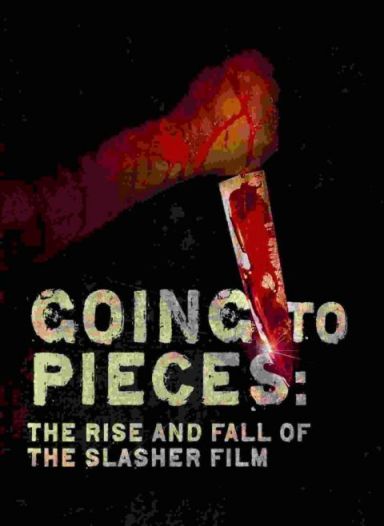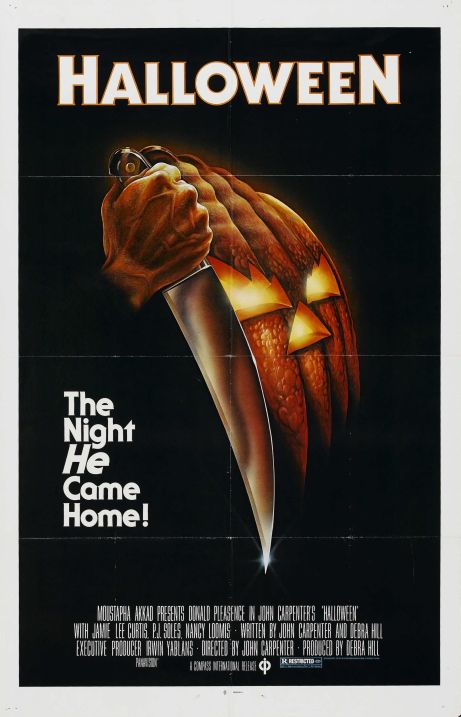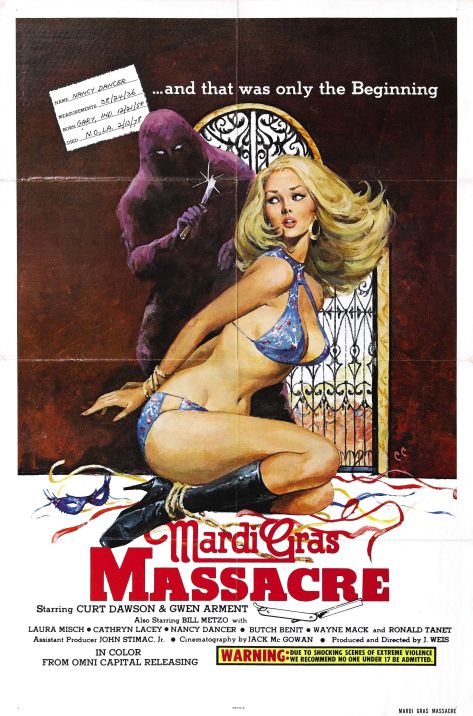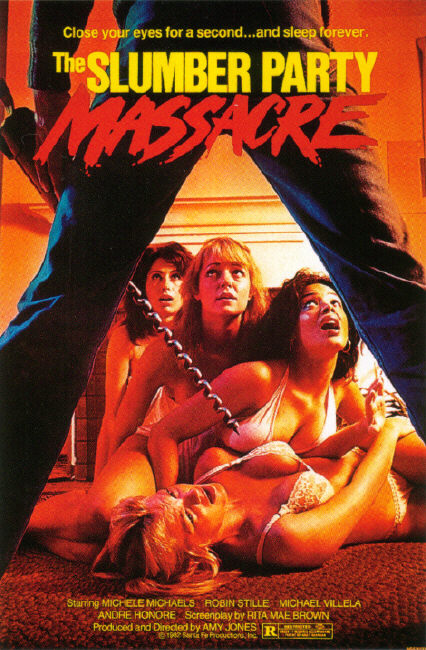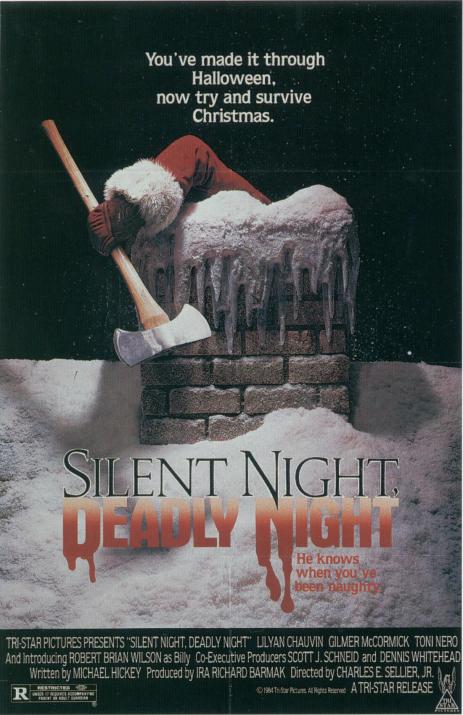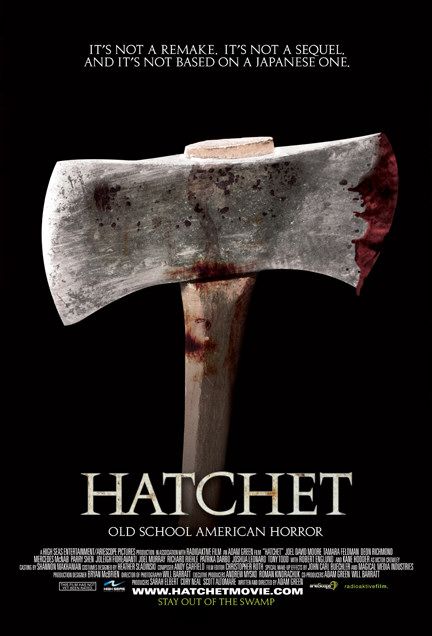Going to Pieces: The Rise and Fall of the Slasher Film

I just finished this great documentary film about the humble beginnings, tumultuous but money making middle, slow sequel descent, and eventual rebirth of that most maligned subgenres of the horror genre — the slasher film. This 2006 documentary was written by J. Albert Bell, Rachel Belofsky, and Michael Derek Bohusz based off the 2002 book by Adam Rockoff. This feature is loaded with appearances from all of the usual big names like John Carpenter, Wes Craven, Sean Cunningham, Greg Nicotero, Tom Savini, and Rob Zombie, but also features some lesser seen horror personalities such as Felissa Rose (Sleepaway Camp‘s Angela) and Slumber Party Massacre director Amy Holden Jones.
This film briefly touches on the early proto-slasher type films of Psycho and Peeping Tom, before acknowledging the true harbinger of the American slasher film movement with Halloween. That film, in my opinion, is great in just about every respect — an awesomely creepy score, atmospheric settings, appropriate pacing, and a strong ending — but admittedly, it does lack in gore. Fortunately, there are other (countless others) to fill the void in the blood and guts department. Savini and Nicotero discuss some of the effects seen in such slasher greats as The Prowler, The Burning, and Friday the 13th part 4. Additionally, the giallo film influence is mentioned, as these slasher greats are just as inspired by Italians maestros like Mario Bava and Dario Argento as they are American madmen like Ed Gein.
Unfortunately, the slasher’s meteoric early-1980s rise was tempered by a mid-1980s backlash. Many of the early theatrical releases hold much more artistic value, but later churned out for the VHS-market releases simply provide a high body count without any sort of redeeming philosophical or artistic merit. When producers simply start pumping out film after film featuring a killer murdering on a certain day (My Bloody Valentine, April Fools Day, Graduation Day, etc.), something has to give.
Another nail in the coffin was the backlash from critics and concerned parents groups about the effect of slasher films on American audiences, particularly women and children. Roger Ebert is quoted as saying, “these films hate women.” Wes Craven admits “slasher films are considered one notch above pornography,” but many of these producers and directors, Craven included, feel that this idea is too short-sighted. Often times it is a strong feminine character who is able to survive the onslaught and provide representation of the sort of moralistic values the conservative (Reagan-era) leaders desired. Rather than being misogynistic, Amy Holden Jones maintains that a movie like hers plays to a woman’s true life fears, and contains more frequent and more graphically depicted male deaths. Also, Holden Jones adds that one can’t discount those movies that feature a female in the role of the killer. Betsy Russel (Mrs. Voorhees from the original Friday the 13th) puts it best with this quote: “I don’t think it’s demeaning to women! It’s an art form!”
But what about the children? Won’t somebody think of the children? There is an anecdote retold about how protests of the movie Silent Night, Deadly Night not only led to its being pulled from theaters, but also convinced Paramount to put the axe to Jason Voorhees in The Final Friday. Children should be parented, rather than their biological producers smearing mud all over the good name of sleazy slasher flicks. Besides, it is much safer to let teenagers key into these movies, with their fictional portrayals of violence, than to send them off to war as photographers (in Tom Savini’s case). Art, and I believe that is an apt term for a select number of slasher flicks, is a reflection of life and sometimes life is bloody, and filled with sexual deviancy or bodily mutilation. The desire of people to watch these films is to explore and understand part of the human condition and what it means to be a part of an ever growing materialistic society. Amy Holden Jones continues this line of thought: “Horror movies before [the 1980s], the metaphors had gotten old . . . I think in the 80s there was a new perception that the enemy was ourselves. That the worst possible enemy was another human who had gone crazy and whose motive was not rational and who could just come out of the blue and kill you.”
This emphasis on reality may have been what made the slashers great originally, but it was the more fantastical Nightmare on Elm Street that brought a resurgence for the genre in the mid-1980s. Again, there is the idea of paying for the sins of youth: sex, drugs, and rock-n-roll equals death, but a film like Nightmare, and a killer like Robert Englund’s Freddy Kruger, is much more sophisticated and stylish than the earlier glut of slashers. Unfortunately, Freddy was wearing some double-edged finger blades, as his films and character led to the greater corporatization of the slasher killers. All of a sudden murderous madmen could be marketed to middle America. Jason Voorhees, Michael Myers, and The Texas Chainsaw Massacre‘s Leatherface were resurrected and milked for sequel after sequel until these films divulged into self-parody (see Friday the 13th part 6). All of our masked antiheroes sort of just faded away, into a 1990s slasher slump.
Until Wes Craven returned with the ultimate meta-critique on the genre with Scream. This film harkened back to Hitchcock’s Psycho with a big-name actress killed in the beginning of the movie. It also laid bare all of the rules and underlying philosophy that makes a slasher film tick. Scream made horror (and particularly slashers) mainstream again by using popular actresses in a familiar routine, only slightly shook up, and with a nod and a wink to all the genre’s fans from the previous decade. A movie like Silence of the Lambs may have been afraid to admit that it was horror, but Scream laid it all out, and led to later slasher-esque films like Saw and Hostel, which emphasize the familiar old troupes, tweak things a bit, and amp up the special effects gore to torture porn levels.
It is obvious that since the release Going to Pieces: The Rise and Fall of the Slasher Film. horror has become more mainstream. Today Greg Nicotero’s gut-wrenching special effects in The Walking Dead are some of the most popular sights to be seen on cable television. Additionally there was an entire show focused on a serial killer with Dexter. True, there are still slasher stinkers (and remakes) cheaply being shit out by production companies, but there are some hidden gems out there like Behind the Mask: The Rise of Leslie Vernon or the throwback Hatchet series to enthrall modern viewers. To quote former editor of Fangoria Tony Timpone, “the genre has an amazing resiliency, just like the characters in those films.”

